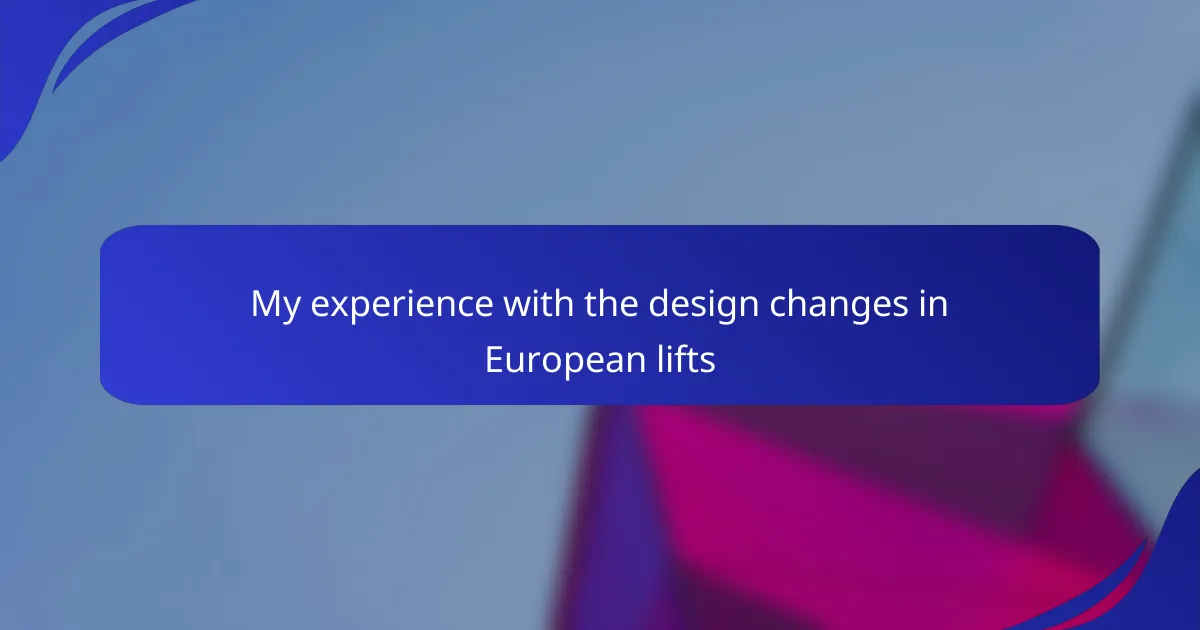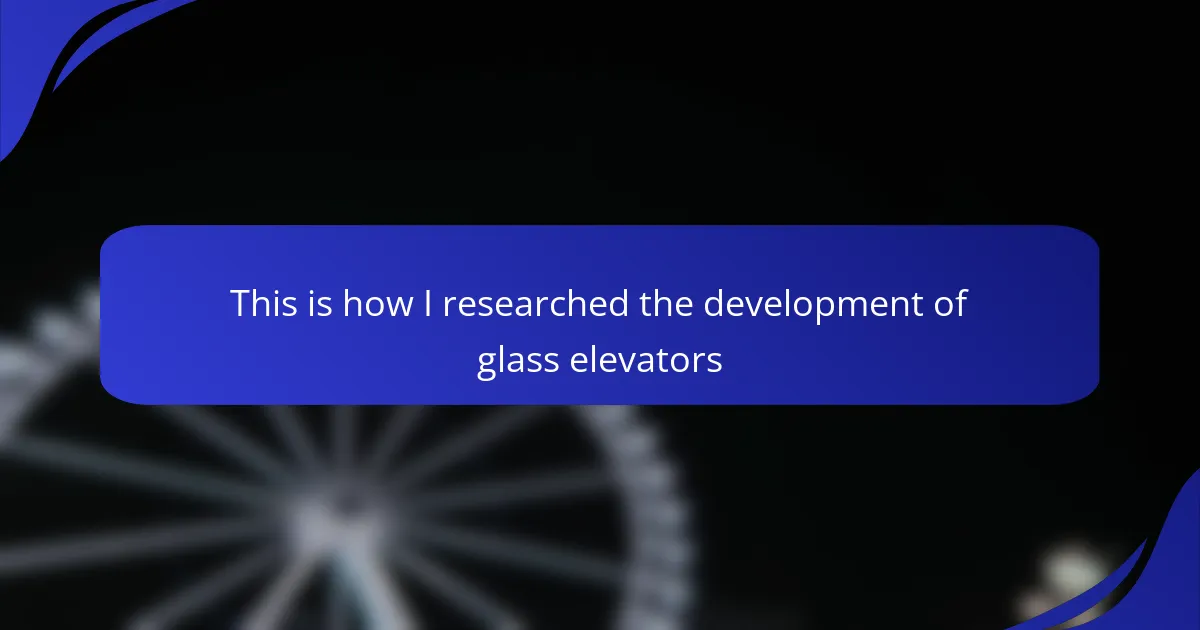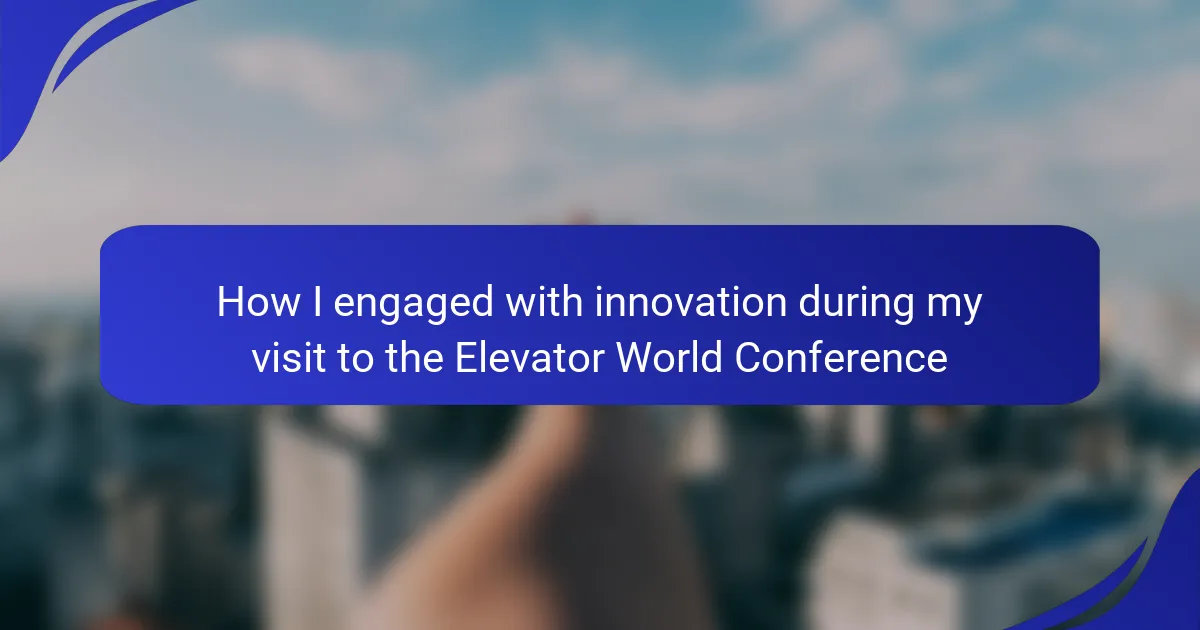Key takeaways
- Modern elevators emphasize sustainability, smart technology, and enhanced safety features to elevate user experience.
- Historical evolution showcases a shift from bulky steam-powered lifts to energy-efficient, compact designs with aesthetic improvements.
- Safety regulations have significantly influenced lift design, leading to innovative features like emergency brakes and user-friendly controls.
- Current trends in European lift design focus on minimalism, customization, and improved accessibility, making rides more enjoyable and seamless.
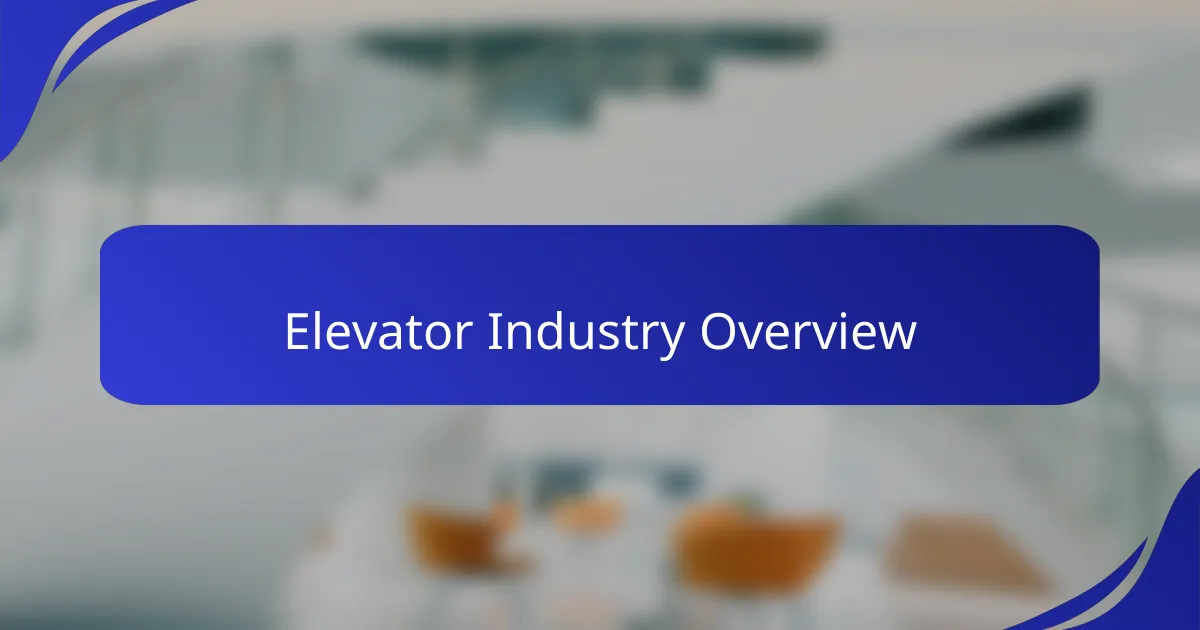
Elevator industry overview
The elevator industry has undergone significant transformations over the years, with design changes reflecting broader trends in technology and user needs. From my observations, modern lifts are no longer just about vertical transportation; they often integrate smart technology, energy efficiency, and comfort, which makes riding them a more enjoyable experience. I still remember the first time I stepped into a sleek, modern lift in Europe, where the subtle lighting and smooth operation instantly made me feel at ease.
Here are some of the key changes I’ve noticed in European elevator design:
- Sustainability: Emphasis on energy-efficient systems and eco-friendly materials.
- Smart Technology: Integration of IoT devices for improved functionality and user experience.
- Safety Enhancements: Implementation of advanced safety features, such as emergency communication systems.
- Aesthetic Improvements: Stylish designs and customized interiors that cater to building architects’ visions.
- Accessibility Features: Increased focus on making lifts user-friendly for people with disabilities.
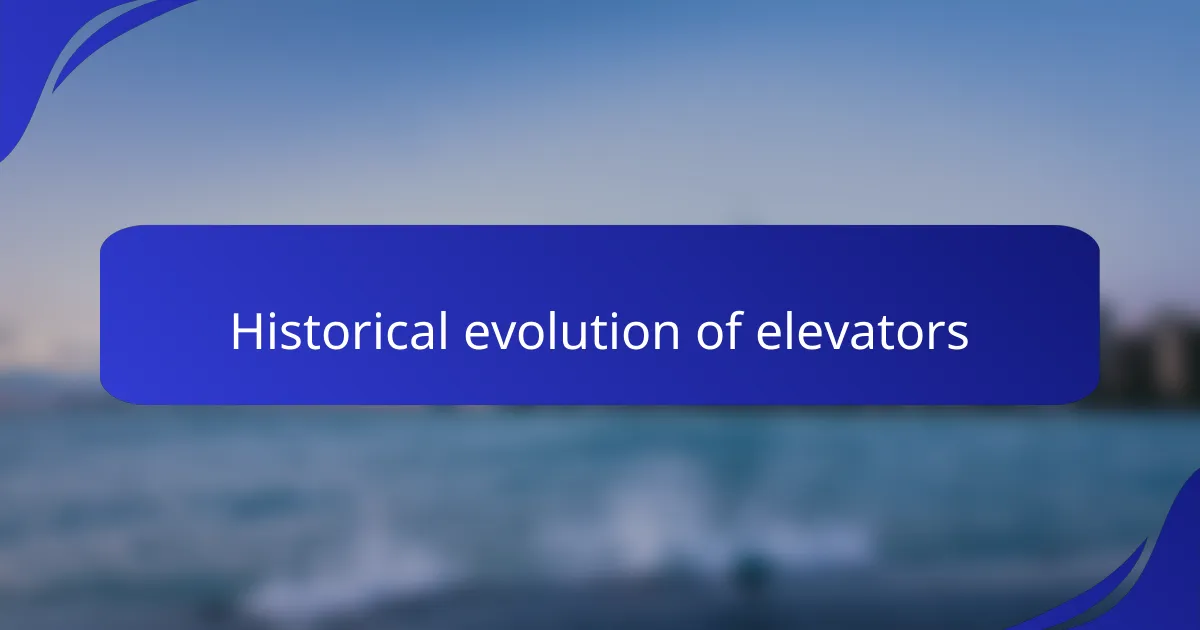
Historical evolution of elevators
The design of elevators has transformed dramatically over the years, reflecting technological advancements and changing user needs. When I first encountered a vintage European lift, I was struck by its ornate ironwork and the sense of history it conveyed. Each design change seems to mirror societal progress – from the bulky, steam-powered lifts of the early 19th century to the sleek, efficient models we see today.
As I explored the evolution of elevators in Europe, I noticed some key shifts that shaped their development:
- 19th Century Beginnings: Steam-powered elevators were initially heavy and cumbersome, often used in industrial settings.
- Electric Revolution: The shift to electric elevators in the late 1800s allowed for more compact designs and wider accessibility.
- Art Deco Influence: In the 1920s and 30s, elevators embraced Art Deco aesthetics, featuring stylish finishes that enhanced the user experience.
- Modern Safety Features: Advances in technology have introduced features like automatic doors and safety brakes, prioritizing user safety and convenience.
- Sustainability Focus: Today, there’s a growing emphasis on energy-efficient designs and eco-friendly materials, reflecting broader societal values.
Each of these changes not only impacted functionality but also shifted how people perceived elevators in their daily lives, making them essential, and even elegant, parts of architecture.
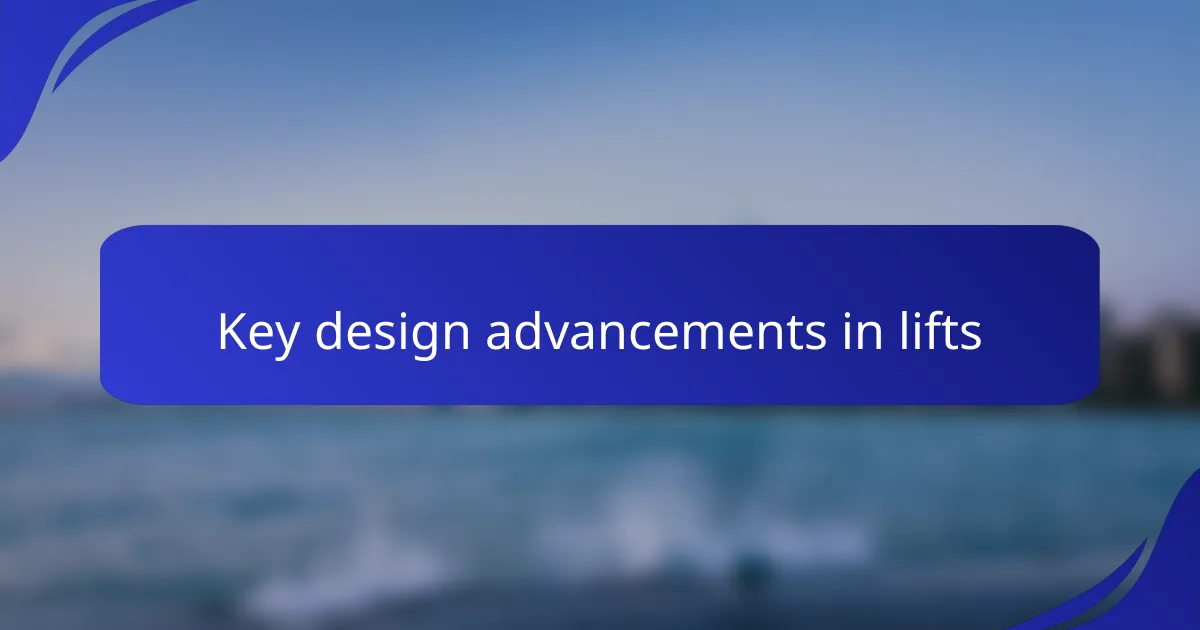
Key design advancements in lifts
When I reflect on the design advancements in European lifts, I can’t help but feel excited about the evolution we’ve witnessed. From the introduction of machine-room-less (MRL) technology to enhanced safety features like door sensors, these innovations not only improve functionality but also elevate user comfort. I remember stepping into one of the first MRL elevators—there was something almost futuristic about it, not having the bulky machinery overhead.
Another significant advancement has been the shift toward more energy-efficient solutions. Today’s lifts often utilize regenerative drives that improve energy consumption dramatically. This not only makes a positive environmental impact but also reduces operational costs, which I think is essential in our progressive world.
Here’s a comparative table of key design advancements in lifts:
| Advancement | Description |
|---|---|
| Machine-Room-Less (MRL) Technology | Eliminates the need for a separate machine room, saving space and providing easier access for repairs. |
| Regenerative Drives | Recycles energy back into the building’s electrical system, significantly reducing energy consumption. |
| Smart Control Systems | Utilizes AI to optimize elevator performance and reduce wait times through predictive analysis. |
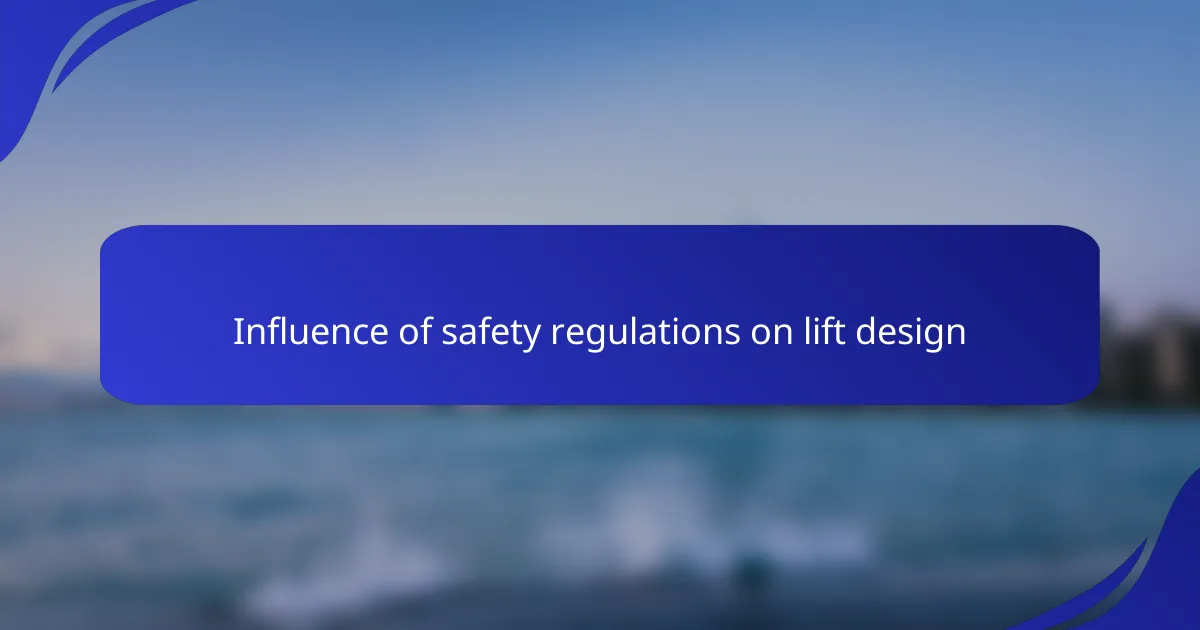
Influence of safety regulations on lift design
The impact of safety regulations on lift design cannot be understated. I still remember the first time I entered a renovated building where modern lifts integrated advanced safety features like emergency brakes and overload sensors. It felt reassuring knowing that these improvements came from stringent safety guidelines, ensuring that both workers and passengers were protected in their daily commutes.
Reflecting on my experience, it’s evident that safety enhancements have made lifts not only safer but also more accessible. The integration of user-friendly controls and emergency communication systems speaks volumes about how regulations push innovation in our industry. Here are some critical ways safety regulations have shaped lift design:
- Implementation of emergency braking systems to prevent free falls.
- Mandated regular maintenance checks to ensure efficient operational safety.
- Enhanced fire safety measures, including smoke detectors.
- Adoption of advanced load sensors to prevent overloading.
- Development of accessible features for individuals with disabilities.
These elements show how regulations aren’t just restrictions; they lead to thoughtful design changes that prioritize our well-being. Each ride through a lift equipped with these innovations feels like a step into a safer future, making a noticeable difference in my daily interactions with these machines.
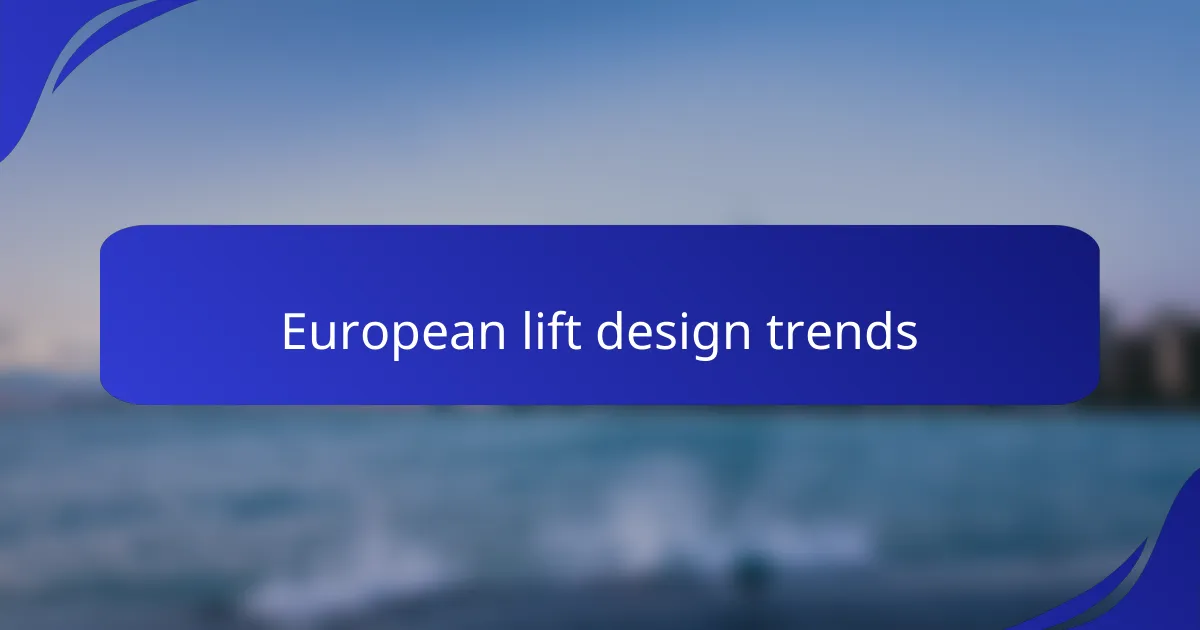
European lift design trends
When I reflect on European lift design trends, I notice a significant shift towards minimalism and functionality. I remember the first time I stepped into a modern lift in a sleek German office building; the clean lines and soft lighting felt inviting rather than intimidating. It was a refreshing departure from the more ornate styles of the past, showing how aesthetics and purpose can harmonize beautifully.
In my experience, several key trends are defining the landscape of European lift design today:
- Sustainability: Eco-friendly materials and energy-efficient systems are increasingly prioritized.
- Smart Technology: Integration of IoT features allows for remote monitoring and predictive maintenance.
- Customization: Designers now offer personalized options to match the building’s interior theme.
- User Experience: Focus on creating a comfortable atmosphere with better acoustics and lighting.
- Space Optimization: Innovative designs make lifts feel more spacious, even in smaller buildings.
I find these trends not only appealing but also essential as we move towards a more connected and environmentally conscious future.
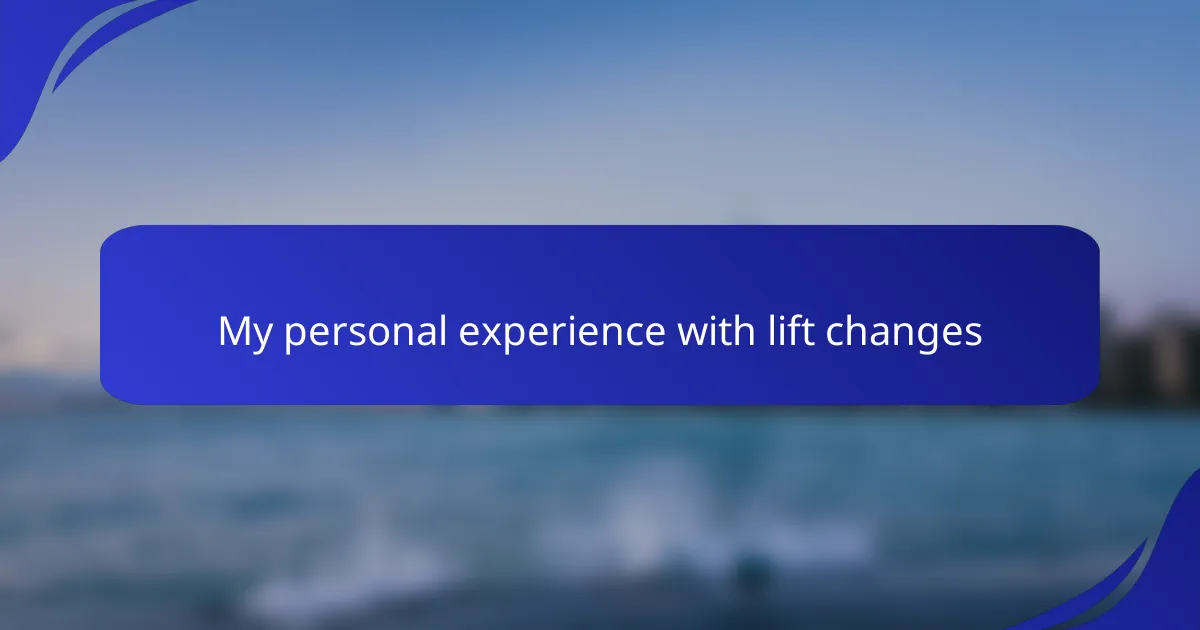
My personal experience with lift changes
My experience with lift design changes in Europe has been quite eye-opening. I vividly remember riding a glass lift in an old historic building in Barcelona, which was so stunning yet so unsettling. The combination of modern transparency and the structure’s age created a unique ambiance that made the journey feel like a leap through time.
Reflecting on these changes, I’ve noticed several key aspects that really impact the user experience:
- Enhanced safety features, like automated doors that ensure passengers don’t rush in or out.
- Energy-efficient designs that not only save power but also contribute to a more sustainable future.
- Accessibility improvements, like tactile buttons and audio signals, making lifts more user-friendly for individuals with disabilities.
- Design aesthetics that blend modern technology with historical elements, often creating a conversation piece on their own.
- Smart technology integrations that allow for personalized experiences, like recognizing frequent users or optimizing wait times.
These advancements not only improve functionality but also enhance the overall journey. Each ride feels more like a moment to be enjoyed rather than just a means of transportation.
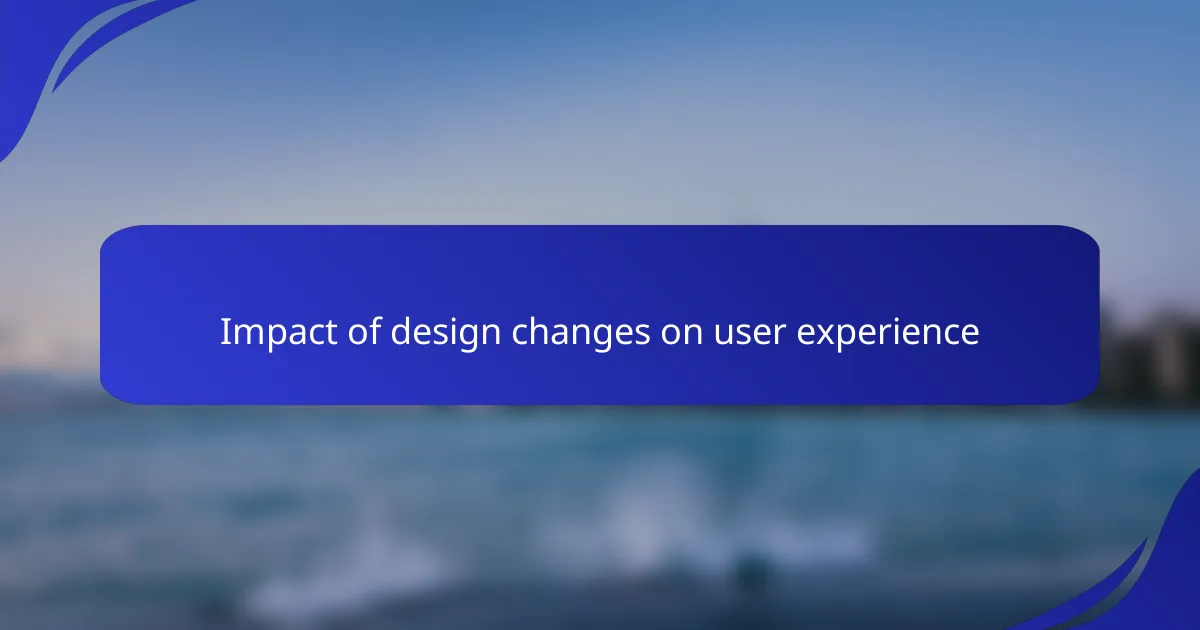
Impact of design changes on user experience
When I reflect on the design changes in European lifts, I can’t help but feel a sense of nostalgia for the old-school models that once defined the industry. The latest modernizations, with their sleek aesthetics and improved functionality, have undeniably enhanced user experience. For instance, the smooth ride and quiet operation of contemporary lifts make the journey far more pleasant than those jarring stops of the past.
Furthermore, accessibility in design has significantly improved. I vividly recall a time when navigating a lift with bulky packages felt like an obstacle course. Today’s lifts often come equipped with wider doors and clearer signage, which makes life so much easier for everyone.
The advancements in technology also play a crucial role, allowing for real-time updates and user-friendly interfaces that I find invaluable. It’s fascinating to see how thoughtful design can transform something as routine as using an elevator into a seamless experience.
| Design Feature | User Experience Impact |
|---|---|
| Sleek Aesthetics | Increased visual appeal, enhances comfort |
| Wider Doors | Improved accessibility for all users |
| Real-time Updates | Enhanced user confidence and reduced wait times |
| Improved Safety Features | Boosted user trust and peace of mind |
